#Daniel Melnick
Photo
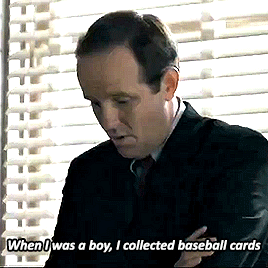



I learned the hard way. For a deal to be good, there has to be equal consideration and there is no way you could cough up enough consideration to justify a deal for him!
#law & order#law and order#law and order og#ben stone#eada benjamin stone#danielle melnick#michael moriarty#tovah feldshuh#mygif#logif#law & order 3x06#PLEASE THIS IS SO FUNNY#like sweetie#it's not a good story#and tovah's delivery is SO GOOD#like i've cried laughing over this#amanda pls enjoy your sweet boy
24 notes
·
View notes
Text
By The Fire - Elizabeth Olivet/Danielle Melnick
A/N: Day 6 for @fluffyfebruary


It’s been a long day for Danielle by the time she comes home to Elizabeth. The fire is already lit, Elizabeth quietly sipping her tea even as she waits for Danielle, her smile soft when Danielle finally comes into the room, settling into Danielle’s side the second Danielle sits. She’s relaxed but it’s clear that she’s missed this closeness. Danielle, herself, admits that she’s missed this too, the simple calm of curling into the woman she loved soothing her.
“Welcome home.”
Elizabeth’s murmur is soft and Danielle smiles, kissing her softly. They don’t often need the fire but as both women relax into one another and the simple closeness it’s easy for Danielle to soak up the simple pleasure of holding Elizabeth close, enjoying the quiet trust in the act.
#law & order#law and order#elizabeth olivet#danielle melnick#danielle/elizabeth#elizabeth/danielle#fluffy february#fluffyfebruary#fluffyfebruary2024#fluffy february 2024
2 notes
·
View notes
Photo


incorrect law & order quotes (6/?)
#law and order#law and order mothership#brooklyn nine-nine#brooklyn 99#jack mccoy#danielle melnick#incorrect quotes
28 notes
·
View notes
Text





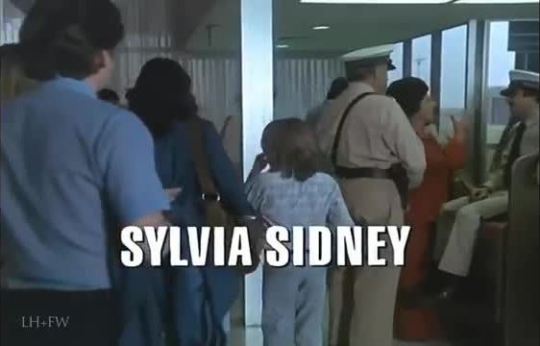






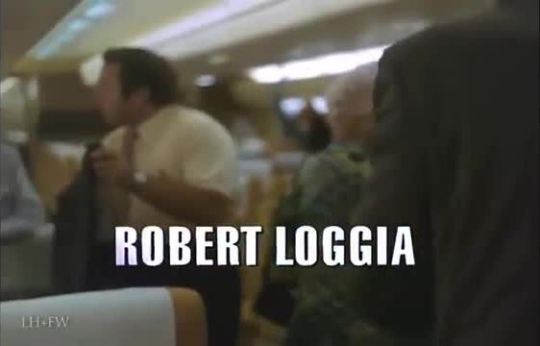


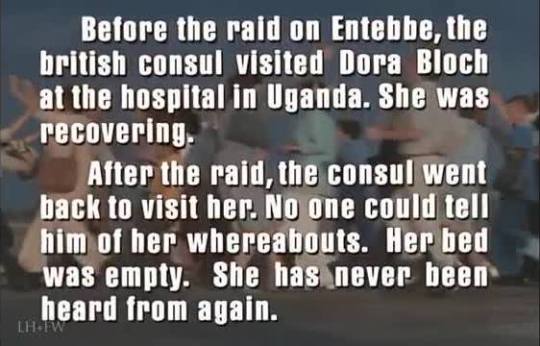
Raid on Entebbe - NBC - January 9, 1977
Historical Drama
Running Time: 150 minutes
Stars:
Peter Finch as Yitzhak Rabin
Charles Bronson as Brigadier General Dan Shomron
Yaphet Kotto as Idi Amin
Martin Balsam as Daniel Cooper
Horst Buchholz as Wilfried Böse
John Saxon as Major General Benny Peled
Jack Warden as Lieutenant General Mordechai Gur
Meshach Richards as Major General Allon
Sylvia Sidney as Dora Bloch
Robert Loggia as Yigal Allon
Tige Andrews as Shimon Peres
Eddie Constantine as Captain Michel Bacos
Warren Kemmerling as Gad Ja'akobi
David Opatoshu as Menachem Begin
Allan Arbus as Eli Melnick
Stephen Macht as Lieutenant Colonel Yonatan "Yoni" Netanyahu
James Woods as Captain Sammy Berg
Harvey Lembeck as Mr. Harvey
Dinah Manoff as Rachel Sager
Kim Richards as Alice
Aharon Ipalé as Major David Grut
Mariclare Costello as Gabrielle Krieger
Larry Gelman as Mr. Berg
After the Uganda–Tanzania War, Tanzanian troops discovered Bloch's body in 1979 in a sugar plantation around 20 miles (32 km) from Kampala, near the Jinja Road. Visual identification was impossible because her face was badly burned, but the corpse showed signs of a leg ulcer. A pathologist working with the Israel Defense Forces formally identified Bloch from the remains. Her remains were returned to her son in Israel, where she was given an Israeli state funeral. She was buried in Jerusalem's Har HaMenuchot Cemetery. (Wikipedia)
20 notes
·
View notes
Text
Musician EPK Platform Sonicbids Sold To Advance Music Technologies
(HYPEBOT) – Sonicbids, which presents digital press kits for musicians, has been bought to Daniel Melnick and his Advance Music Applied sciences.
We final heard about Sonicbids in 2013 when it was acquired by Backstage in a $15 million deal backed by Guggenheim Companions. Backstage is a service targeted on the theater and movie industries, and the plan was to mix the 2 to create a LinkedIn…
0 notes
Text

youtube
Little Rock Nine and Paul McCartney React to Beyoncé's 'Blackbird' Cover
Melba Pattillo Beals loved the Beatles’ 1968 hit “Blackbird” long before she knew she had helped inspire it, she tells the Washington Post’s Kyle Melnick.
Beals, now 82, was a member of the group of students known as the Little Rock Nine, who integrated an Arkansas high school in 1957.
In 2016, songwriter Paul McCartney revealed that the story of the Little Rock Nine was a major inspiration for him as he wrote “Blackbird.”
“Way back in the ’60s, there was a lot of trouble going on over civil rights, particularly in Little Rock,” McCartney said before performing the song at a concert in the city, as Rolling Stone’s Daniel Kreps reported at the time.
“We would see what was going on and sympathize with the people going through those troubles, and it made me want to write a song that, if it ever got back to the people going through those troubles, it might just help them a little bit.”
Beals was deeply touched by the musician’s words.
“Paul McCartney said by writing that song, ‘I hear you, I may not be able to rescue you, but I hear you singing in your dark,’” Beals tells the Washington Post.
Now, Beals—along with music lovers around the world—can listen to the White Album classic as sung by another larger-than-life musician: Beyoncé.
On March 29, Beyoncé released Cowboy Carter, the second installment of a trilogy project that began with 2022’s Renaissance.
While Renaissance paid homage to the queer, Black legacy of disco and house music, Cowboy Carter tips its cowboy hat to country music, claiming space in a genre that has historically excluded Black artists, even though it has roots in Black music.
The second song on Cowboy Carter is “Blackbiird” (the ‘ii’ stylization nods to the album being “Act II” of the trilogy), a cover of McCartney’s original.
Though “Blackbird” may not be the first song to come to mind when one thinks of country music, Beyoncé’s cover alludes to the genre through harmonic flourishes that feature four Black contemporary country artists: Tanner Adell, Brittney Spencer, Tiera Kennedy and Reyna Roberts.
When Beals heard the new cover, she was immediately transported back to the ’50s.
“This song awakens so much,” she tells the Washington Post.
In 1954, the Supreme Court issued its historic Brown v. Board of Education decision, which declared that segregation in public schools was unconstitutional.
Following that decision, the NAACP began attempting to enroll Black students in previously all-white schools in the South.
The news that nine Black students had been chosen to enroll in Little Rock Central High was met with outrage.
When the students first tried to attend the school on September 4, 1957, they were confronted by a large white mob that was yelling threats and throwing stones.
Soldiers from the Arkansas National Guard blocked the students from entering, defying the federal mandate to desegregate.
After numerous thwarted attempts, the students started regularly attending Central High a few weeks later.
MacKenzie Green, the daughter of Ernest Green, another member of the Little Rock Nine, tells the Washington Post that the Beyoncé cover is “one of the coolest things that has ever happened.”
“Finally, this moment has arrived where they are being embraced and given their flowers,” she says, adding that she thinks “Blackbiird” will help preserve the memory of her father and the other students.
On Thursday, McCartney uploaded a picture of him and Beyoncé to Instagram.
In the caption, he called her cover a “magnificent version” that “reinforces the civil rights message that inspired me to write the song in the first place.”
He wrote that Beyoncé had thanked him via FaceTime for letting her interpret the song.
“When I saw the footage on the television in the early ’60s of the Black girls being turned away from school, I found it shocking, and I can’t believe that still in these days there are places where this kind of thing is happening right now,” McCartney continued. “Anything my song and Beyoncé’s fabulous version can do to ease racial tension would be a great thing and makes me very proud.”
Beals hopes the song will remind listeners that the battle for racial equality remains urgent.
“‘Blackbird’ is about the past, today and the future,” she tells NPR’s Juliana Kim, adding: “As long as there is a single individual on the planet who is not free, then none of us are free.”
Beyoncé Harmony Holiday
In Cowboy Carter, the Queen Bey presiding over the end of empire is also preparing for the next new thing.
What happens when your delusions of grandeur are not delusions; when you accrue the talent, resources, and courage to execute any dream or vision you possess, and there will invariably be an audience from which detractors will be cast as lunatics or heretics, fanatics as voices of reason, the willfully indifferent as lacking in imagination and joie de vivre, and grandeur itself will be defined by your whims?
Beyoncé is some of what happens; she’s one of the last bastions of the wilting American dream, as pedestalized, scrutinized, criticized, and territorialized as Elvis and Michael Jackson, and, like them, often blamed for entrancing fans with more spectacle than substance.
This is her fate, that of all who become pop cultural legends, and that of the nation.
She opens Cowboy Carter, the second chapter of her Renaissance trilogy, with a ballad titled “Ameriican Requiem,” appropriating an ambivalent nationalism that constantly appropriates or scapegoats her as its greatest cultural export, arbiter of a transnational zeitgeist reliant on black performance for collective repentance.
Bey renews shared vows of grandeur (hers and the nation’s) by lending them an icy macabre veneer, which she melts and reverse-engineers for the album’s duration.
National anthem becomes national requiem, a tearful departure conceives itself as the path to revival: For things to stay the same they have to change again / Hello my old friend.
It’s the inverse of an induced labor, prematurely declaring the death of a stricken empire to resuscitate it, tricking us all into an interval of patriotic nostalgia, the opening ceremony of a ritual we aren’t supposed to witness except as it harnesses our approval by granting us a chance to mourn some vague loss—the loss of our souls, maybe.
The singer is offered as redeemer.
Later, in the swooning, gothic epic of an opening, I am the one to cleanse me of my father’s sins.
This rebirth of the nation as Beyoncé’s baptism into the realm of what is allowed to be called country music is warranted, prelude to an episodic act of vengeance in the name of justice.
And isn’t divaism itself a form of two-way vengeance acting on both subject and object, trapping them together in a codependent loop of truce by mutual obsession?
You invented me, you made me this way, I will distract you from yourself and undo you for it, reciprocal undermine.
We move on, to Beyoncé inhabiting “Blackbiird.”
The album’s second track of twenty-seven is a Beatles cover, and while it does little to add to the original, its spirit is that of lawns on college campuses and parks across the country.
There’s always a kid who just learned to play guitar covering the folk classics who lands in this oversimplified sky chanting wistfully you were only waiting for this moment to arise.
youtube
In my mind, I remix it with Nina Simone’s interpretation of “Blackbird,” not a cover, an overhaul, in which she taunts, why you wanna fly, blackbird / you ain’t ever gonna fly.
Blackbirds are everywhere in the American poetic imagination, and on Cowboy Carter they introduce the black bard, who is making a thorough and intricately researched country album not only because she’s a pageant-winning, rodeo-attending Texas native and this is her music, but because when she attended the CMAs in 2016, she was subsequently shunned like a stain on the genre, her performance with the Dixie Chicks wiped from the award ceremony’s digital record.
Beyoncé is migrating instead of breaking.
The husk and heft of her delivery of take these broken wings and learn to fly strips her agenda of disguises.
What happens when you’re the end of other people’s delusions of dominion over sounds you invented?
youtube
The album moves swiftly from pensive to violent and pulpy, bridged by sweet fables like “Protector,” for her daughter Rumi, and “My Rose,” a song-of-self and pep talk whose ethereal mood you find yourself wishing would wash the element of something to prove off the album.
youtube
It does not.
Our reluctant herald of the falling empire is out for blood and in the mood to disclose.
The original Cowboy Carter, whose name the album echoes alongside Beyoncé’s own, was a white woman who traveled to black households and bars and collected or stole songs and styles from black folk and country musicians, the ones who brought the nation the banjo, teaching her its chords.
It makes sense then that Beyoncé has structured this album as if it’s part of the Folkways series, with nods to and cameos from Willie Nelson, Linda Martell, and Dolly Parton.
youtube
The cover of Parton’s legendarily distressed “Jolene” forces new archetypes into the standard’s distended spirit.
The dominant one mimics the strength card in the tarot, half-lamb, half-lion—martyr and predator in yet another leave-my-man-alone anthem from the singer.
We’re forced to consider the feeling of switching gods instead of watching them—is the upheaval marking our current moment so confounding that we are killing the idols we simultaneously worship, or convincing them to dismantle themselves as a form of re-enchantment?
youtube
“Jolene” blends seamlessly into “Daughter,” the most unabashed bloodbath on the album, because it plays out like the glorification of Jolene’s murder, fragility sacrificed on the altar of harsher dreams.
We pivot from cleansing the sins of the father to vowing that we’re just like him when crossed.
We must confront the fact that we’re in the center of a saga, not just an album, a kind of tell-all that gets carried away and divulges a little too much, on purpose, to be released from the burden of its secrets.
youtube
The veils are thin and flimsy, and the rowdier upbeat tracks, like “Spaghettii,” “Ya Ya,”and “Riiverdance,” try their best to darn them, and fail; they simply help air more grievances somatically, freeing the body to contest being mis-genred and mishandled in love.
The mood is somber even in celebration, we’re celebrating death, you-made-me-do-it acts of outrage, and the years of resentment that smudge the halos of artists who are forced to be ambassadors for traditions that don’t love or even respect them, only included when it’s expedient to a nation’s propaganda machine to have the best performer in the world on its side.
Beyoncé, like the USA, is weary of performing herself.
Throughout Cowboy Carter, she pursues fresh alter egos and intentionally slips out of character until you question who she really is.
It’s effective storytelling, cajoling you into answering the question with her, and including country in every valence of your description of the woman who reintroduces herself here.
There are some prevailing constants—you cannot be profound and evasive at the same time, too much restraint for too long can inspire one to binge rage, you cannot mount a horse with an abridged American flag looking like an animated Barbie corpse and not signify manifest destiny in the hands of its trickster-reaper, no stars on her flag.
Because there are never any unintentional mistakes in Beyoncé’s output, Cowboy Carter plays like a declaration of independence, but it’s unclear what from.
She doesn’t appear to be abandoning anyone, and she’s not behaving recklessly or withdrawn enough to be abandoned; she’s withholding overt political statements and offering symbolic gestures as she often does to deflect from the power of her influence, and she proves her point, veering toward the didactic and begrudging to do so.
So why does it emerge a little monotonous, or tentative even, with all its glitz and range, like the rupture of a glamour spell?
For one, because the impending death of empire will take its stars down with it, even the dazzle of their reinventions of self can’t stave off the fact that the formula holding our former fantasies together has come unraveled.
There’s the unshakeable sense that without the class struggle that demanded black country musicianship as the sonic texture and scaffolding of a way of life, reclaiming the genre so extensively ignites homesickness and disembodiment instead of homecoming or reunion.
The album becomes a record of the displaced and misshapen collective ego searching for its center and finding an abyss wherein having it all is catastrophically limiting.
Beyoncé’s country music is at the mercy of the nation’s temperament, which right now is somewhere between deranged decadence and despondency, adorned with its pathologies, mistaking them for badges of honor.
What happens when you’re so stellar at proving your point that your point becomes that it’s time for a requiem for the twin death cults of stardom and Americanism?
youtube
Them old ideas / are buried here, Bey sings, looping back to the requiem on the final track, “Amen,” as if it was all a long prayer for forgiveness and mercy.
Cowboy Carter teaches us that we must lose interest in vengeance to achieve it.
The tension left unresolved on the album is between humility and hubris, a contradiction that has always frustrated country and rhythm and blues music.
In the USA, where fame became its own talent, crucial to staving off the disgraces of the nation-state, wounded pride or not, this music needs Beyoncé as much as she needs the space it provides her to discard idols and rehearse the next versions of herself.
In Cowboy Carter, the Queen Bey presiding over the end of empire is also preparing for the next new thing.
Blackbird
A Reason To Smile
One would have to live under a large rock not to be aware that Beyoncé, the multi-platinum, multi-Grammy-winning queen of R&B and multiple other genres, has recently released a country album. I was intrigued by this notion and decided to take a listen to a few of the 27 tracks on “Cowboy Carter.”
I would like to say it is hard to believe this is her first crack at country, but those pipes … she could sing the paint off a house.
More informed men and women than I have reviewed this impressive album.
But I wanted to highlight one song that is just a stunner: “Blackbird.” It is this week’s reason to smile.
Originally written by Paul McCartney in 1968, “Blackbird” was his response to the American civil rights movement.
He has said he wanted to write a song dedicated to those who had been affected by discrimination, especially women.
In British slang, “bird” means “girl.”
Beyoncé has said her album is a celebration of the history of Black cowboys and the hardships they faced.
She wrote on Instagram that it was “born out of an experience that I had years ago where I did not feel welcomed […] But, because of that experience, I did a deeper dive into the history of Country music and studied our rich musical archive.”

Beyoncé’s version of “Blackbird” features four Black country artists — Tanner Adell, Tiera Kennedy, Reyna Roberts, and Brittney Spencer — who together add sublime harmonies to the cover.
Another little nugget worth mentioning: Beyoncé used Paul McCartney’s original
Dan Rather
3939 Bee Cave Rd., Bldg. C-100, Austin, Texas 78746
0 notes
Photo




1951. Daniel Melnick, cuecard boy on Steve Allen’s CBS daytime program, ascended to become one of the most powerful people in television. He was a producer at ABC overseeing the development of The Fugitive, The Flintstones, and Get Smart. In the mid-1970s he became head of MGM.
4 notes
·
View notes
Text
i hit 100 followers today!!
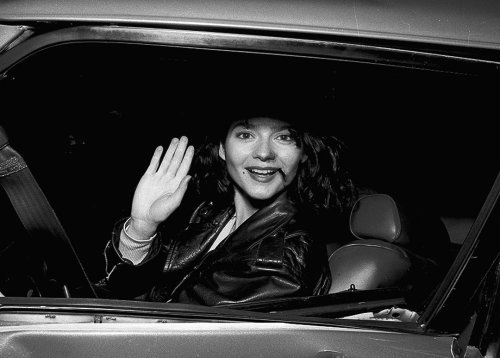
actually 102 but who's counting ;)
in order to celebrate, i want to give you guys some presents?
i'm going to write as many 100 word drabbles or 500 word ficlets as prompts i get in the next week! please send the length, character/ship, prompt list/number/quote (or original request), and (optional) "genre" that you want to see to my ask box and i'll run (not walk) to google docs for you.
characters:
claire kincaid, alex cabot, casey novak, olivia benson, jack mccoy, serena southerlyn, abbie carmichael, alexandra borgia, jamie ross, connie rubirosa, elizabeth olivet, monique jeffries, john munch, mike logan, elizabeth rogers, rey curtis, danielle melnick, sally bell, margot bell, anita van buren, tracey kibre, kelly gaffney kay howard , tim bayliss, frank pembleton, megan russert, (others? just ask - or, ask for any or my ocs, or let me pick!)
ships:
casey/alex, abbie/serena, serena/casey, jack/claire, jack/sally, abbie/alex, tracey/kelly, abbie/toni, jerena (yes, really, you know who you are <3), (others? just ask - or ask for any or my ocs, or let me pick!)
prompts:
halloween/horror prompts
tvtropes fanfic tropes
fake dating prompts
romance story starters
not-really-romantic story starters
or one of your own!
songs - pick a song or lyric:
walkman - bad bad hats
just let me love you - lowen
wildest dreams - taylor swift
talking to myself - gatlin
pocketful of sunshine - natasha bedingfield
i wanna __ you til i'm dead - YACHT
everybody wants to love you - japanese breakfast
i'm beginning to see the light - duke ellington/ella fitzgerald
genres:
fluff, hurt/comfort, angst, romance, "slow" burn (500 words, so), friends-to-lovers, enemies-to-lovers, fix-it. i won't write explicit nsfw but maybe some spicy- think T/M not E.
i'm tagging some mutuals in the hopes that people see this :) no pressure!
@commasplice27 @lesbianologist @wine-drunk-on-elizabeth @justalittleghostwriter @dankspeare @sweetprentiss @storiesofsvu @alexcabot @livscabot @rosiewritesagain @holycrapraewth @multi-obsessions @onherwayrejoicing @morbidlonging629 @oliviaomlandthethird @15coldhotpockets @teenageraccoon @sit-drink-smile @yipyipjemily @ms-calhoun @theofficialjerenablog @eastberlin @crazybagelbitch @arrowgirll13 @rollinsnovak @voltives @enduringalexblake @illicitaylors @disaster-and-disgrace @hoe4almondmilk @alexcabotgf @hi-i-1 @littlelemonkey @season4scullyhair @addictedtodinosaurs @whiteberryx @laezzzi @swimmingstudentchaos891 @bilingualfiction @cmmndrwidw @bumblebear30 @dxringred
#svu#law & order#law & order svu#olivia benson#alex cabot#casey novak#serena southerlyn#abbie carmichael#claire kincaid#jack mccoy#mike logan#kay howard#homicide: life on the street#law & order: trial by jury#tracey kibre#kelly gaffney#elizabeth olivet#connie rubirosa#danielle melnick#rey curtis#monique jeffries#john munch#tim bayliss#frank pembleton#megan russert#anita van buren#jamie ross#alexandra borgia#calex#cabenson
58 notes
·
View notes
Photo
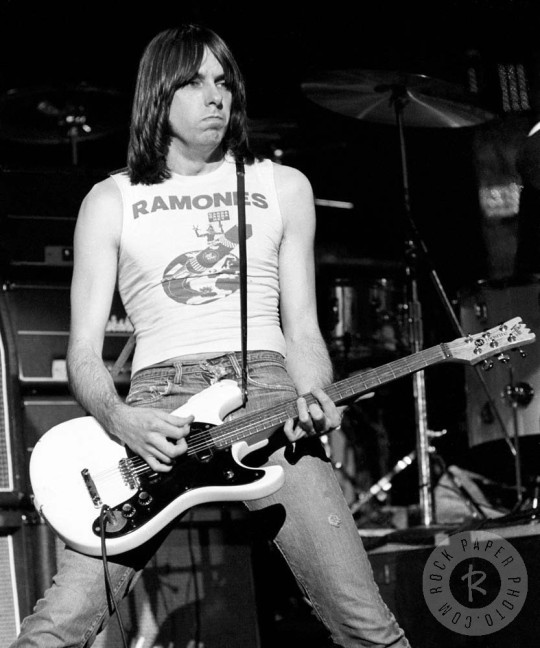
Today we remember the passing of Johnny Ramone who Died: September 15, 2004 in Los Angeles, California
John William Cummings (October 8, 1948 – September 15, 2004), known professionally as Johnny Ramone, was an American guitarist and songwriter who was the guitarist for the punk rock band the Ramones. He was a founding member of the band, and—along with vocalist Joey Ramone—remained a constant member throughout his entire career.
In 2009, he appeared on Time's list of "The 10 Greatest Electric-Guitar Players". He ranked No. 8 on Spin's 2012 list of the "100 Greatest Guitarists of All Time" and No. 28 on Rolling Stone's similarly titled 2015 list.
Alongside his music career, Johnny appeared in nearly a dozen films (including Rock 'n' Roll High School) and documentaries. He also made television appearances in such shows as The Simpsons (1F01 "Rosebud", 1993) and Space Ghost Coast to Coast (Episode 5 "Bobcat").
His autobiography, entitled Commando, was released posthumously in 2012. In the book, Ramone writes about his love of baseball and of collecting baseball cards and movie posters, particularly horror-related posters.
John William Cummings was born in Queens, New York City, on October 8, 1948, the only child of a construction worker (a steamfitter) of Irish descent. He was raised in the Forest Hills neighborhood of Queens, where he grew up absorbing rock music. As a teenager, Johnny played in a band called the Tangerine Puppets alongside future Ramones drummer Tamás Erdélyi (better known as Tommy Ramone). As a teenager, he was known as a "greaser", though he was later described as a tie-dye-wearing Stooges fan. He was a lifelong New York Yankees fan. He also worked as a plumber with his father before the Ramones became successful, at one point attended Peekskill Military Academy in Peekskill New York, and briefly attended college in Florida.
He met future bandmate Douglas Colvin, later to become Dee Dee Ramone, in the early 1970s while delivering dry cleaning. They would eat lunch together and discuss their mutual love of bands like the Stooges and MC5. Together they went to Manny's Music in New York City in January 1974, where Johnny bought a used blue Mosrite Ventures II guitar for just over $54. On the same trip, Dee Dee bought a Danelectro bass. They collaborated with future bandmate Jeffrey Hyman, later to become Joey Ramone, to form the Ramones with Richie Stern on bass. Stern left after a few rehearsals. Tommy joined the Ramones in the summer of that year after public auditions failed to produce a satisfactory drummer.
Johnny was responsible for initiating one of the major sources of animosity within the band when he began dating and later married Linda Daniele, who had previously dated Joey. Though the band remained together for years after this incident, relations between Johnny and Joey remained strained. Years later, when Joey was in the hospital dying of lymphoma, Johnny refused to telephone him. He later discussed this incident in the film End of the Century: The Story of the Ramones, saying an attempt at such a reunion would have been futile. He did add that he was depressed for a week after Joey's death. When pressed, he acknowledged that this was because of the bond forged by the band. In their road manager Monte Melnick's book about his time with the Ramones, Johnny is quoted as having said, "I'm not doing anything without him. I felt that was it. He was my partner. Me and him. I miss that."
Johnny was one of the few conservatives in the punk rock community and was a staunch supporter of the Republican Party. He made his political affiliation known to the world in 2002 when the Ramones were inducted into the Rock and Roll Hall of Fame. After thanking all who made the honor possible—clad in his trademark T-shirt, ripped blue jeans and leather jacket—he said "God bless President Bush, and God bless America". He said in an interview, when questioned on his conservatism, "I think Ronald Reagan was the best President of my lifetime." This was evident when the band released the UK single "Bonzo Goes to Bitburg" in 1985; Johnny pressed for a name change, finding the title insulting to Reagan, and the song was retitled on American releases as "My Brain Is Hanging Upside Down (Bonzo Goes to Bitburg)" after a line from the song's chorus. In this same interview he claimed that "Punk is right wing".
Johnny's father was a strict disciplinarian. Johnny is quoted as saying: "My father would get on these tangents about how he never missed a day's work. I broke my big toe the day I had to go pitch a Little League game and he's going, 'What are you – a baby? What did I do, raise a baby? You go play.' And even though my toe was broken I had to go pitch the game anyway. It was terrible. It would always be like that. I'm glad he raised me like that but it would always be, 'What are you – sick? You're not sick. What did I raise – a baby? I never missed a day's work in my life.' Then I went to military school, and in military school, you couldn't call in sick."
Johnny's early adulthood was marked by bouts of delinquency which he stated were inexplicable at the time. "I didn't become a delinquent until I got out of high school. I had a two-year run. I'd go out and hit kids and take their money and rob everybody's pocketbooks. Just being bad every minute of the day. It was terrible. I don't know what my problem was. Things that were funny to me at the time were horrible. If I found a television set sitting in the garbage, I'd take it up to the rooftop, watch for someone walking down the block and drop it in front of them on the sidewalk. It was funny watching them see a TV set come crashing down 30 feet in front of them. To me it was hysterical, but it was also a mean and terrible thing to do. I also found a way of stopping the elevator. I could open up the door and stop the elevator. I would wait for an old lady to get in and stop the elevator. They'd be yelling and pushing the alarm, and I would keep them there. At about 20 years old, I stopped drinking and doing drugs, got a job and tried to be normal."
In 1983, Ramone was severely injured in a fight with Seth Macklin of the band Sub Zero Construction. He was saved by emergency brain surgery. This incident was said to have inspired the next album's title, Too Tough to Die. He never spoke of the incident in the following years.
Johnny Ramone married his wife Linda in 1984 at the office of the city clerk in New York City. She had originally dated Joey Ramone but left him for Johnny. Joey and Johnny continued to tour as the Ramones after this, but their relationship worsened. However, despite reports that they had stopped talking to each other altogether, Johnny talks fondly of Joey in his book Commando. In the documentary End of the Century, Johnny told how Joey's death had a profound impact on him emotionally and that he was depressed for "the whole week" after his death.
On September 15, 2004, Johnny Ramone died in his Los Angeles home at the age of 55, 23 days before his 56th birthday, following a five-year battle with prostate cancer. Many of his friends and musical contemporaries came to pay their respects. His wife Linda kept his ashes
6 notes
·
View notes
Text
Danielle Melnick is such a boring non-character. I get that they're going for an adversarial defense attorney to be like an arch nemesis that the ADA respects but like … she's not cutting it. I don't hate or love her and as a defense attorney it should be either or. Or both if they're really good
1 note
·
View note
Text
I’m loving Chicago Justice and Peter Stone in particular. The show gives me classic Law & Order feels. And Peter is more like Jack McCoy to me than his own father, Ben Stone. And then you have original Law & Order characters appearing (Shambala Green appearing in the Chicago PD episode “Justice” backdoor pilot, Danielle Melnick as a Chicago judge, Manhattan ADA-turned-defense attorney Paul Robinette).
#chicago justice#law & order#peter stone#ben stone#jack mccoy#danielle melnick#paul robinette#shambala green
17 notes
·
View notes
Text
The Moment Of Truth From Your Lies - Danielle Melnick/Elizabeth Olivet
A/N: Day 6 of @febuwhump


“You lied to me.”
Elizabeth’s voice is low, firm, angry. She’s been pained for days, considering how best to address what happened, she had told him it was alright, of course, at first, but Ben could see she hadn’t really slept since he used her rape against her, used it to discredit her, even when he had been right to do it. He could see Danielle’s eyes soften as she moves closer, resting a light hand on Elizabeth’s back.
“You said you’d never hurt me.”
Elizabeth’s voice is soft, still pained and Danielle waits, watching him then, when he’s about to protest, cuts him off.
“You lied to me too Ben. You said she was your expert, someone you liked, trust, respected… you would never have done what you did if you felt any of that for her.”
Elizabeth leaves and Danielle steps closer, her voice lower and huskier.
“She cried Ben. You fucked up, hard. She would have forgiven you if you bothered to call her after, but you waited, like a chicken. She’s done here, for now. Find someone else to check out your perps.”
Later, much later, Danielle lies with Elizabeth curled against her, stroking a soft hand up Elizabeth’s spine, her lips pressed to Elizabeth’s hairline.
“You’ll be okay Beth… I’ve got you now.”
“I know Dani…. I know.”
Elizabeth’s sigh is soft.
“It just… hurt.”
“I know Sweetheart, never again.”
#elizabeth olivet#danielle melnick#danielle/elizabeth#elizabeth/danielle#law & order#law and order#febuwhump#febuwhump2024#febuwhump 2024#day 6
0 notes
Text
intertextuality
desire / eating disorder / hunger: «to be the girl who lunges at people−wants to eat them» (letissier) / «a way to take all hungers and boil them down to their essence–one appetite to manage–just one» (knapp)
trauma / trauma theory / visceralities of trauma
writers
ada limón, adrienne rich, agnès varda, alana massey, alejandra pizarnik, alice notley, ana božičević, anaïs nin, andrea dworkin, andrew solomon, angela carter, angélica freitas, angélica liddell, ann cvetkovich, anna akhmatova, anna gien, anne boyer, anne carson, anne sexton, anne waldman, antonella anedda, aracelis girmay, ariana reines, audre lorde, aurora linnea
barbara ehrenreich, bell hooks, bessel van der kolk
carmen maria machado, caroline knapp, carrie lorig, cat marnell, catharine mackinnon, catherynne m. valente, cathy caruth, césar vallejo, chris kraus, christa wolf, clarice lispector, claudia rankine, czesław miłosz
daniel borzutzky, daphne du maurier, daphne gottlieb, david foster wallace, david wojnarowicz, dawn lundy martin, deirdre english, denise levertov, detlev claussen, dodie bellamy, don paterson, donna tartt, dora gabe, dorothea lasky, durs grünbein
édouard levé, eike geisel, eileen myles, elaine kahn, elena ferrante, elisabeth rank, elyn r. saks, emily dickinson, erica jong, esther perel, etty hillesum, eve kosofsky sedgwick
fanny howe, félix guattari, fernando pessoa, fiona duncan, frank bidart, franz kafka
gabriele schwab, gail dines, georg büchner, georges bataille, gertrude stein, gilles deleuze, gillian flynn, gretchen felker-martin
hannah arendt, hannah black, heather christle, heather o'neill, heiner müller, hélène cixous, héloïse letissier, henryk m. broder, herbert hindringer, herbert marcuse
ingeborg bachmann, iris murdoch
jacques derrida, jacques lacan, jade sharma, jamaica kincaid, jean améry, jean baudrillard, jean rhys, jeanann verlee, jeanette winterson, jenny slatman, jenny zhang, jerold j. kreisman, jess zimmerman, jia tolentino, joachim bruhn, joan didion, joanna russ, joanna walsh, johanna hedva, john berger, jörg fauser, joy harjo, joyce carol oates, judith butler, judith herman, julia kristeva, june jordan, junot díaz
karen barad, kate zambreno, katherine mansfield, kathrin weßling, kathy acker, katy waldman, kay redfield jamison, kim addonizio
lacy m. johnson, larissa pham, lauren berlant, le comité invisible, leslie jamison, lidia yuknavitch, linda gregg, lisa diedrich, louise glück, luce irigaray, lynn melnick
maggie nelson, margaret atwood, marguerite duras, marie howe, marina tsvetaeva, mark fisher, martha gellhorn, mary karr, mary oliver, mary ruefle, marya hornbacher, max horkheimer, melissa broder, michael ondaatje, michel foucault, miranda july, miya tokumitsu, monique wittig, muriel rukeyser
naomi wolf, natalie eilbert, natasha lennard, nelly arcan
ocean vuong, olivia laing, ottessa moshfegh
paisley rekdal, patricia lockwood, paul b. preciado, paul celan, peggy phelan
rachel aviv, rainald goetz, rainer maria rilke, rebecca solnit, richard moskovitz, richard siken, robert jensen, roland barthes, ronald d. laing
sady doyle, sally rooney, salma deera, samuel beckett, samuel salzborn, sandra cisneros, sara ahmed, sara sutterlin, sarah kane, sarah manguso, scherezade siobhan, sean bonney, sheila jeffreys, shoshana felman, shulamith firestone, sibylle berg, silvia federici, simone de beauvoir, simone weil, siri hustvedt, solmaz sharif, sophinette becker, soraya chemaly, stephan grigat, susan bordo, susan sontag, suzanne scanlon, sylvia plath
theodor w. adorno, thomas brasch, tiqqun, toni morrison
ursula k. le guin
valerie solanas, virginia l. blum, virginia woolf, virginie despentes
walter benjamin, wisława szymborska, wolfgang herrndorf, wolfgang pohrt
zadie smith, zan romanoff, zoë lianne, zora neale hurston
157 notes
·
View notes
Text
Catskill’s Bridge Street Theatre Hosts "The Fridge Plays"
Catskill’s Bridge Street Theatre Hosts “The Fridge Plays”
Two cutting-edge one-acts, two playwrights, two directors, five actors, one fridge. Straight from a sold-out run in NYC, ‘The Fridge Plays’ – Daniel Talbott’s Nick and Zoe, directed by Shira-Lee Shalit and Steve McMahon’s sad indie love song, directed by Benjamin Viertel – hit Catskill’s intimate Bridge Street Theatre stage like a punch to the gut for two performances on Friday and Saturday…
View On WordPress
#Arctic Group#Benjamin Viertel#Bridge Street Theatre#Bridge Street Theatre Mainstage#Catskill NY#Daniel Melnick#Daniel Talbott#David Anzuelo#Declan Maloney Drummond#Erica Pappas#Fridge Fest#Kia Rogers#Natalie Donahue#Nick and Zoe#Paul Hudson#Raul Abrego#sad indie love song#Shawna Winey#Shira-Lee Shalit#Steve McMahon#The Fridge Plays#Tristan Raines#Will Pullen
0 notes
Video
instagram
18 de Septiembre en 1965 Se cumple 54 años se emitió el primer episodio de “Get Smart” (Superagente 86)es una serie de televisión estadounidense que parodiaba a las películas y series de espías, una mezcla de James Bond. Creada por Mel Brooks y Buck Henry, era protagonizada por Don Adams, como Maxwell Smart, el agente 86, y Barbara Feldon, como la agente 99. 86 y 99 trabajaban para CONTROL, una supuesta agencia secreta de espías del gobierno de los Estados Unidos. Henry dijo que la idea de la serie vino de una propuesta de Daniel Melnick de sacar partido de «los dos personajes más importantes del mundo del entretenimiento de hoy: James Bond y el inspector Clouseau». Brooks dijo: «Es una combinación demente de #JamesBond y la comedia de #MelBrooks». La serie se emitió en la NBC entre el 18 de septiembre de 1965 y el 12 de abril de #1969. Después se trasladó a la CBS, donde se emitió la última temporada, entre el 11 de septiembre de 1969 y el 11 de septiembre de 1970. La serie era muy popular a mediados de los años 1960, y ha sido repuesta en varias ocasiones en todo el mundo vía satélite. Ganó siete Premios Emmy y fue nominada para otros catorce y para dos Globos de Oro. Fue continuada con una secuela en 1995, que fue cancelada con solo siete episodios emitidos. Volvía a estar protagonizada por Adams y Feldon, con Andy Dick en el papel de su hijo, Zach, uno de los gemelos Smart y también se podía ver en esta serie a Elaine Hendrix como la agente 66. La serie era emitida compitiendo directamente con Los Simpsons y además sufrió postergaciones entre episodios por la SuperBowl, esto sumado al desequilibrio de los personajes, Max y su hijo eran ambos torpes y faltaba el contrapeso que los ponga en su lugar, conspiró para que la serie fuera rápidamente sacada del aire. #Collage #ProgramaCollage #Cine #Historiadecine #revistacollage #magazine #series #televisión #ProgramaCollage (en Montevideo, Uruguay) https://www.instagram.com/p/B2otHIlA3p2/?igshid=qbcku6mziu9e
#jamesbond#melbrooks#1969#collage#programacollage#cine#historiadecine#revistacollage#magazine#series#televisión
1 note
·
View note
Text
Setor imobiliário perde fôlego no 3º trimestre

© Reuters. Setor imobiliário perde fôlego no 3º trimestre
Após vários meses consecutivos de alta, o mercado imobiliário abriu o trem de pouso e começou a baixar voo. Os relatórios operacionais preliminares divulgados pelas maiores incorporadoras do País mostram que o setor ampliou os lançamentos no terceiro trimestre, mas as vendas não acompanharam.
Os lançamentos cresceram 19,2% no terceiro trimestre, na comparação com o mesmo período de 2020, chegando a R$ 9,023 bilhões. Mas as vendas líquidas não cresceram na mesma proporção: a alta foi de apenas 1,7%, alcançando R$ 7,090 bilhões.
Os dados representam a soma dos resultados das 14 incorporadoras listadas na Bolsa de Valores que já divulgaram suas prévias operacionais: Cury (SA:CURY3), Direcional (SA:DIRR3), MRV (SA:MRVE3), Tenda (SA:TEND3), Plano & Plano (SA:PLPL3), Cyrela (SA:CYRE3), Even (SA:EVEN3), Eztec (SA:EZTC3), Helbor (SA:HBOR3), Lavvi (SA:LAVV3), Melnick (SA:MELK3), Mitre (SA:MTRE3), Moura Dubeux (SA:MDNE3) e RNI (SA:RDNI3).
O mercado de média e alta renda teve desempenho mais fraco do que o segmento popular. Empresas como Cyrela, Even, Eztec e Melnick apresentaram recuo nas vendas, apesar de aumentar os lançamentos. Lavvi e Moura Dubeux tiveram expansão em ambos. No Casa Verde e Amarela, MRV e Tenda tiveram aumento de vendas discreto, enquanto Direcional e Cury registram alta mais forte.
De modo geral, a estagnação das vendas vem da diminuição do poder de compra dos consumidores, que viram os preços dos imóveis na planta subirem para compensar a disparada nos custos dos materiais de construção. Também pesou nas contas a elevação dos juros dos financiamentos imobiliários pelos bancos.
Em setembro, enquanto a Caixa anunciou redução de 0,4 ponto porcentual nos financiamentos atrelados à poupança, os grandes bancos privados aumentaram suas taxas em cerca de 1 ponto nas linhas de crédito tradicionais. Também no mês passado, o Comitê de Política Monetária (Copom) do Banco Central elevou a taxa básica de juros em 1 ponto, levando a Selic para 6,25% ao ano. Novo aumento deve vir na reunião do colegiado da semana que vem.
"A demanda está marginalmente pior", diz o analista do BTG Pactual (SA:BPAC11) Gustavo Cambauva. "As famílias se retraíram porque o affordability (capacidade de pagamento) diminuiu. Quem compra imóvel para investir saiu um pouco desse mercado porque está mais cauteloso com o aumento dos juros."
O levantamento dos dados das empresas também demonstra que a velocidade média de vendas do setor baixou de 25,5% para 20,2% – esse indicador calcula o porcentual das vendas no período diante da oferta total de lançamentos e estoques.
"A velocidade de vendas forte que víamos no passado caiu", afirma Cambauva. "As empresas estavam vendendo até metade dos apartamentos na largada. Isso não é comum."
Analista de mercado imobiliário do Credit Suisse (SIX:CSGN), Daniel Gasparete concorda que a demanda está esfriando e acrescenta outra razão para a menor velocidade de vendas. "O consumidor está vendo que há bastante oferta. Basta atravessar a rua ou dobrar a esquina para encontrar outro estande", diz. "As incorporadoras lançaram bastante nos últimos meses e aumentaram estoques. A oferta está mais alta, só que a demanda está mais baixa."
As informações são do jornal O Estado de S. Paulo.
O conteúdo Setor imobiliário perde fôlego no 3º trimestre aparece primeiro em Eu Vou Investir.
from WordPress https://ift.tt/3pwJFpX
via IFTTT
0 notes